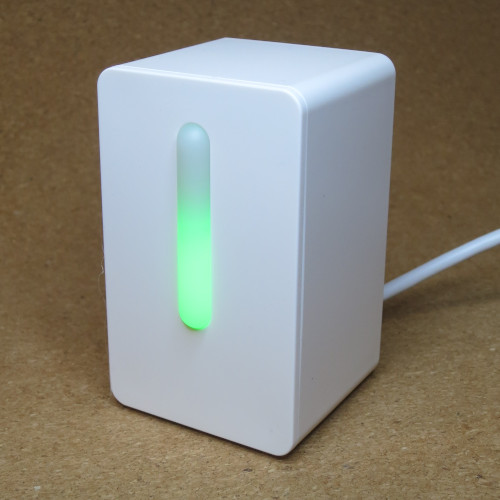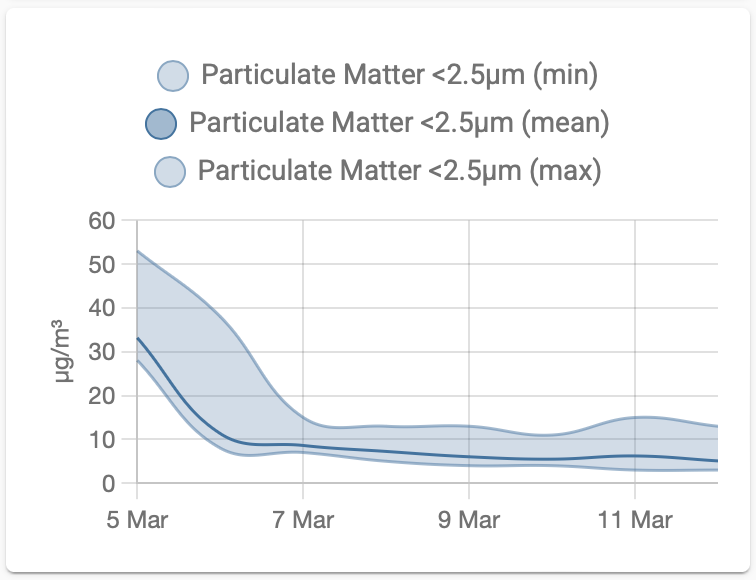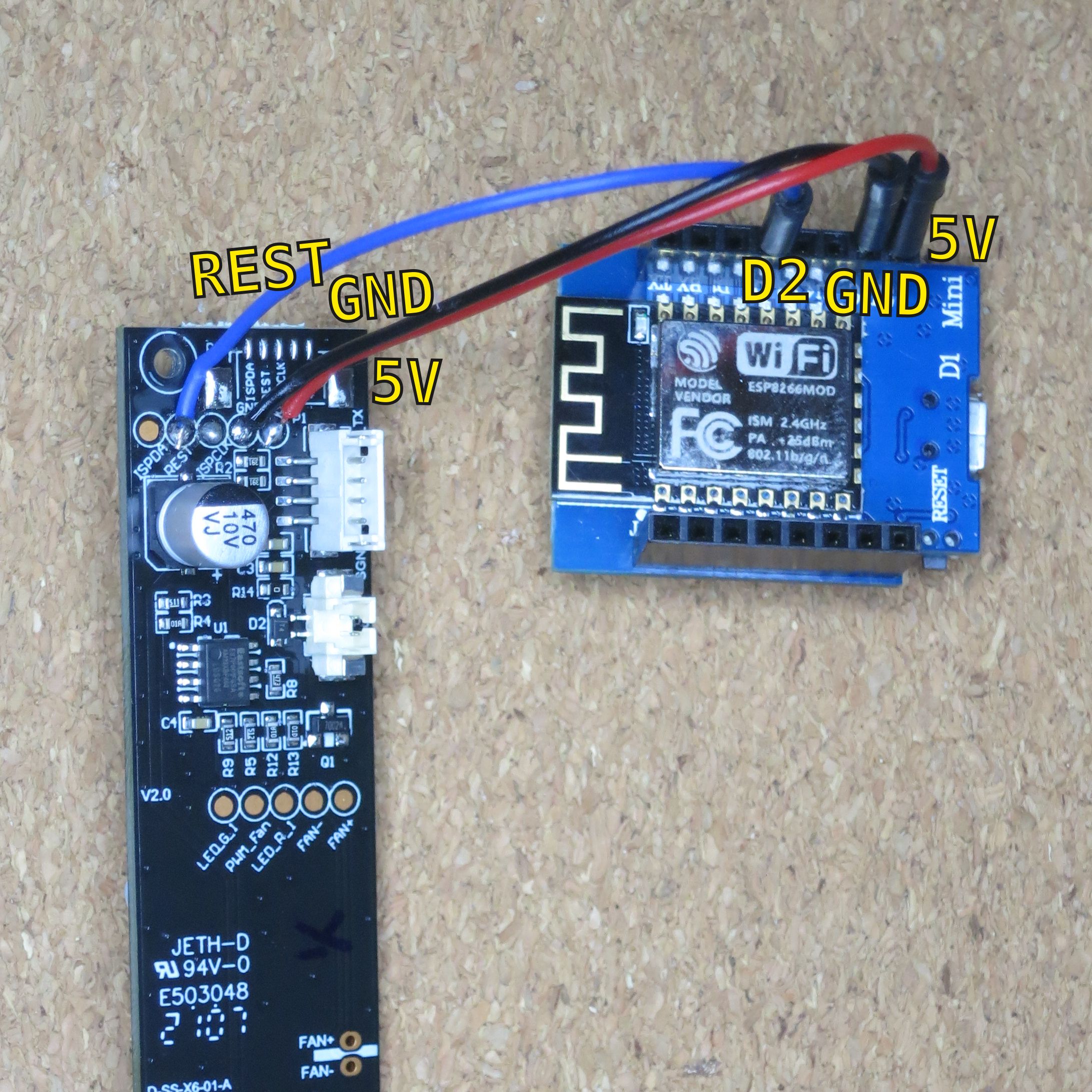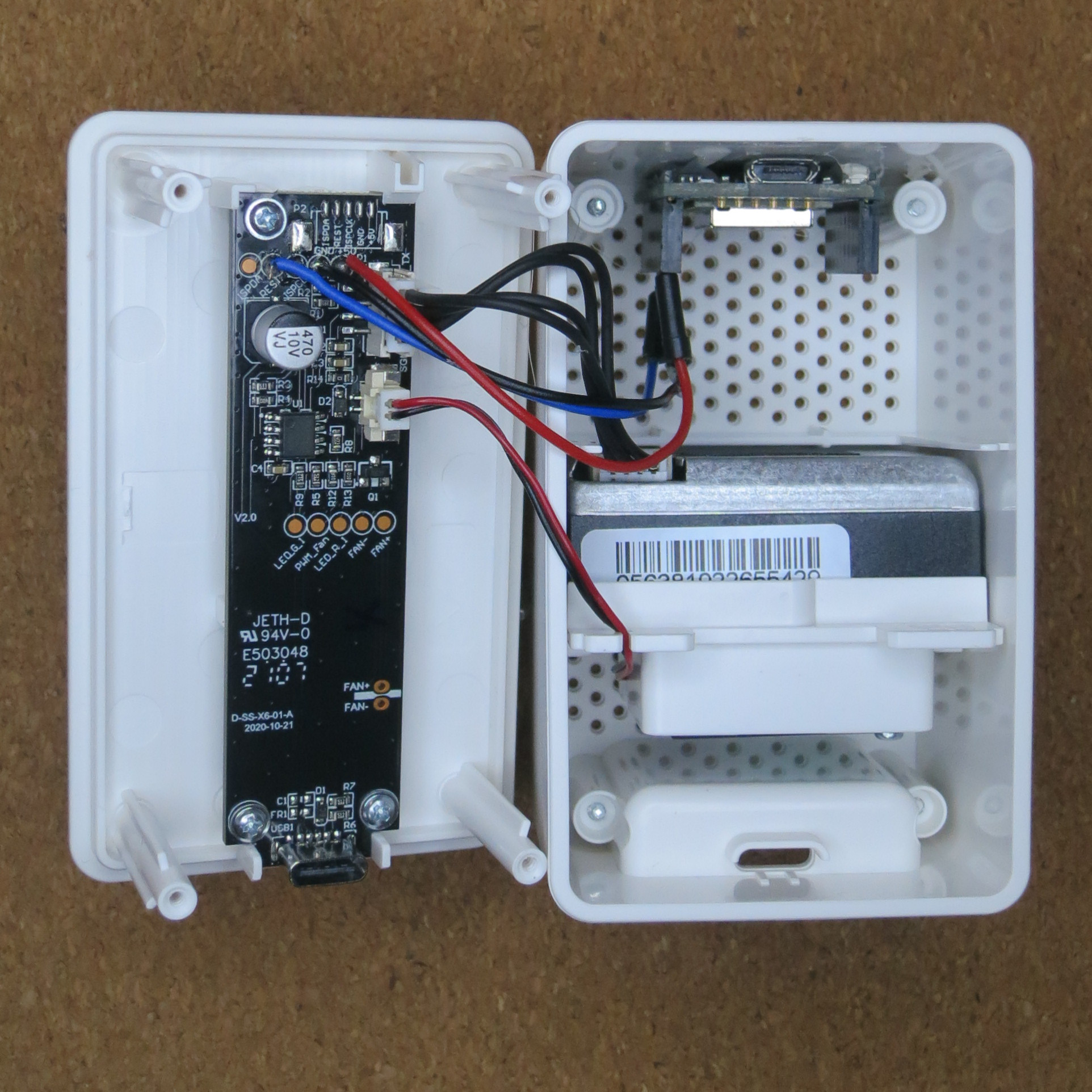IKEA's VINDRIKTNING is an air quality sensor that samples particles in the air and illuminates an LED to report its findings.
The module also writes the sample data to a UART tx port, making it possible to publish
the sample and make it available to a home automation system.
Following Hypfer's work in receving and publishing the sample data with an Arduino project, ESPHome contributors soon built a PM1006 Particulate Matter Sensor component to simplify the process of setting up a UART sensor for ESPHome.


To follow the steps below, you will need:
5V regulator (like the Wemos D1 Mini ESP8266).REST, GND and +5V pads.
D2,
GND and 5V pins.

D2.
Use the ESPHome dashboard to configure the ESP. Remember to keep secrets in a separate configuration file. Ensure the
static_ip is an available and assignable IP address.
First, install a basic ESPHome
esphome:
name: air-quality-sensor
# Depends on the ESP and breakout board model.
esp8266:
board: d1_mini
logger:
api:
encryption:
key: !secret air_quality_sensor_api_encryption_key
ota:
password: !secret air_quality_sensor_ota_password
uart:
# Software uart on this port isn't realtime, but the baud rate is slow.
rx_pin: D2
baud_rate: 9600
sensor:
- platform: pm1006
pm_2_5:
# The name of this sensor will show in Home Assistant
name: "Particulate Matter <2.5µm"
wifi:
ssid: !secret wifi_ssid
password: !secret wifi_password
# Skip searching for available networks first
fast_connect: true
# Connecting is faster and more reliable if you don't wait for DHCP.
# Just make sure the router is also configured to reserve this address for your device.
manual_ip:
static_ip: !secret air_quality_sensor_wifi_manual_ip_static_ip
gateway: !secret air_quality_sensor_wifi_manual_ip_gateway
subnet: !secret air_quality_sensor_wifi_manual_ip_subnet
Log in to your router and reserve the static_ip IP address. Keep note of that address
and the api_encryption_key.
REST to D2,
GND to GND, and
+5V to 5V).

In Home Assistant, add a new ESPHome integration. Follow the workflow steps, supplying the host IP address and encryption key from before. Once added, the device should appear with a single sensor: "Particulate Matter <2.5µm".
In the screenshot above, I added the sensor to a statistics-graph Lovelace card.
Next step is to use it for a Node-RED automation; such as dispatching a notification if the particulate matter starts to average above 30µg/m³.
If you have any feedback or questions related to this article, please reply to my post on Mastodon. This article is part of the Home automation set.